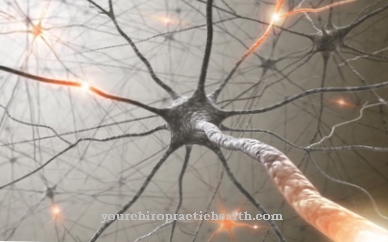The classification the perception corresponds to a categorization that helps with the interpretation of what is perceived. All cognitive categories of humans together form the mental representation of the world. Misclassifications of perception emerge in the context of delusions.
What is the classification?

The classification is one of the last processes in the chain of perception. It takes place far after the primary sensory impression and is sometimes understood as part of the interpretation of percepts. When classifying a perception, the brain conceptually classifies the perceived stimuli into its representation of the world.
The stimuli are absorbed by the sensory organs and a primary sensory impression is created that has so far been free of cognitive and affective processing and modification processes. This level corresponds to perception level I, which is called sensation. In stage II the primary sensory impression is organized by the brain. Only in stage III does the identification of what is perceived follow, which is accompanied by a classification of the perception in the sense of something recognizable.
Classification is part of cognitive perception processing and is often associated with the expression of categorical perception. The continuum of all external stimuli is divided into individual categories by the performance of the perception apparatus. Categorization is a cognitive skill with which people can use intuition to sort different entities and assign collective terms. Cognitive categories are based on similarities. Thus, the classification of the perception is based on a comparison with previous knowledge. Category formation is not only an essential process in the evaluation and interpretation of perceptual content, but also plays an essential role in decision-making processes.
Function & task
Before it is possible to classify the perception, the brain tries to structure the perceived sensory perception in the most orderly manner possible. The brain combines the individually perceived information into a whole. In this way, what is perceived results in a coherent and relatively uniform image.
From an evolutionary perspective, human perception serves as a source for possible reactions to the external world. Perception is therefore an important parameter for survival. From this point of view, only coherent and understandable perceptions help people. For this reason, the human brain summarizes perceived facts, for example, in such a way that they become a conclusive, comprehensible image.
Only after this structuring does a categorization of the perception take place. This categorization corresponds to the classification. The brain uses cognitive processes to classify information insofar as it assigns it to certain categories. These categories exist even before perception and are individually shaped, although many overlap from person to person.
The classification is thus sometimes to be understood as a memory process or at least takes place with the help of memory contents. All previously perceived stimuli are stored in the memory as categories and can serve as a starting point for classification for every new perception. The assignment of what is perceived to certain categories helps to identify the sensory impression.
Categories are an internal filing and sorting system that corresponds to a mental representation of the external world. Category systems for classifying perceptions are constantly changing and can always be expanded or modified. For example, people generalize on the basis of ever new perceptions. This means that he develops rules through certain experiences in order to transfer these rules to new perceptions.
You can find your medication here
➔ Medicines to calm down and strengthen nervesIllnesses & ailments
As a consequence of the necessary classifications of all perceptions, categorization takes place. This necessary categorization indicates that people are naturally prone to prejudice. However, since the categories for classifying perceptions are flexible, human categorizations do not necessarily have to be categorizations based on entrenched prejudices. The discrimination associated with social and cultural prejudices has to do only peripherally with the process of perception.
A faulty categorization of perceptions underlies many mental illnesses. One of them is schizophrenia. Delusional ideas are characteristic of schizophrenic people, for example in the form of paranoia or megalomania. When delusional, patients develop pathologically wrong ideas about reality. Their delusions seem so real to them that they hold fast to them. Almost all living conditions of those affected can become the object of delusion. Many of those affected sometimes feel persecuted, assume that those around them have a conspiracy against themselves or feel that they are seriously ill, which corresponds to a hypochondriac delusion.
Political or religious delusions are summarized as megalomania and are often associated with the idea of being called to something greater. Those affected are unable to recognize their delusional ideas as unrealistic. In megalomania, the delusional idea is often associated with a high need for communication, especially in paranoid schizophrenics with transcendent megalomania.
Scientists now assume that the cause of delusions is a wrong assignment of meaning and thus a misguided categorization of the externally perceived processes in the environment. Patients often put conventional everyday processes into the category of an examination on them. There is also a faulty categorization in the context of other delusions, for example in the case of the delusion of jealousy or the delusion of nullity. The wrong processes involved in classifying perception are probably due to traumatic experiences in the patient's history.
























.jpg)



